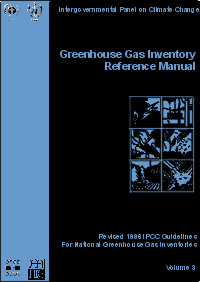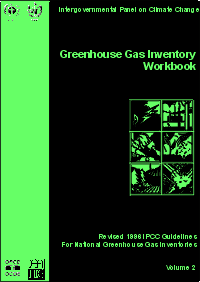The Revised 1996 IPCC Guidelines are your inventory review. These guidelines provide detailed technical guidance for Parties preparing inventories; however, it should be noted that some of the information in them has been updated in the IPCC Good Practice Guidance and the IPCC Good Practice Guidance for LULUCF.
The Revised 1996 IPCC Guidelines are separated into 3 volumes:
|
Volume 1: Greenhouse Gas Inventory Reporting Instructions provides step-by-step directions for assembling, documenting, and transmitting completed national inventory data consistently, regardless of the method used to produce estimates. These reporting instructions are intended for all users of the IPCC Guidelines and provide the primary means of ensuring that all reports are consistent and comparable.
|
|
|
Volume 2: Greenhouse Gas Inventory Workbook contains suggestions about planning and getting started on a national inventory for participants who do not have a national inventory available already and are not experienced in producing such inventories. The inventory workbook also contains step-by-step instructions for calculating emissions of carbon dioxide (CO2 ) methane (CH4), nitrous oxide (N2O), halocarbons (HFCs, PFCs), sulphur hexafluoride (SF6), ozone, and aerosol precursors, from six major emission source categories. The workbook is intended to help experts in as many countries as possible to start developing inventories and become active participants in the inventories programme.
|
|
 |
Volume 3: Greenhouse Gas Inventory Reference Manual provides a compendium of information on methods for estimation of emissions for a broader range of greenhouse gases and a complete list of source types for each. The reference manual summarizes a range of possible methods for many source types.
It is intended to help participants at all levels of experience to understand the processes which cause greenhouse gas emissions and removals to occur and the estimation methods used in compiling inventories. |
|
We would recommend, though, that you re-familiarize yourself with the material on the relevant Sectors for you in Volume 3 and in Volume 1, as we often think that we remember more than we actually do.

